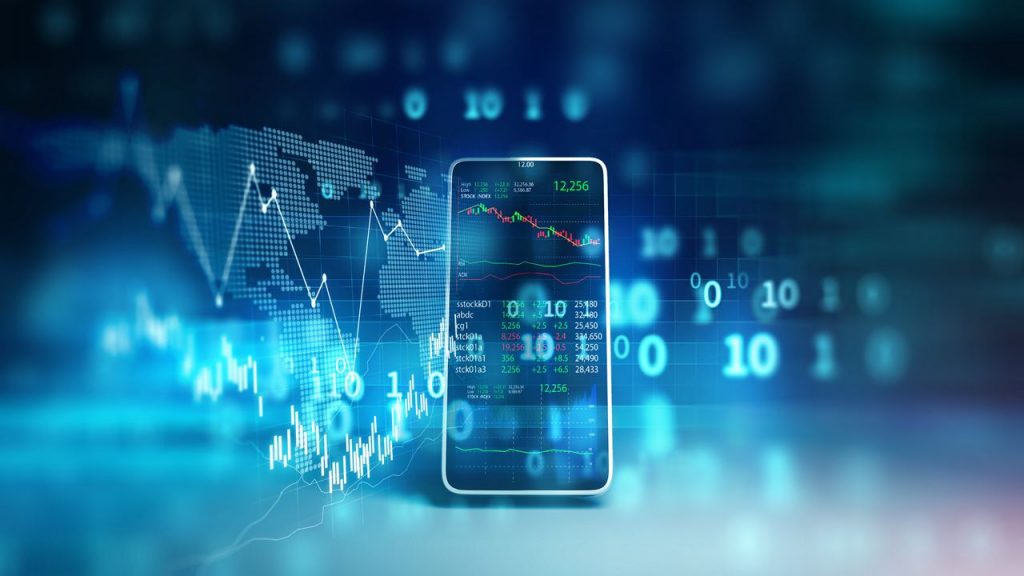
Explaining fintech might sound a bit overdone because it has been talked about for a while. Search “demystify fintech” on Google, and you’ll find tons of articles. So, why are we doing one more? Well, the last few years have been pretty wild for fintech. There’s been fast innovation, unexpected economic stuff, changes in what people like, how fast we adopt new tech, rules changing, and steady growth in different fintech areas. With all this happening, it just feels like the right time for a basic guide to understand what’s going on.
As an IT consulting company, we at FortySeven have been working in Fintech since the time when it wasn’t mainstream. By the time of 2023, we already have our own solution, Finmatic, a software solution system that helps people to launch their own neobanks, digital payment systems, digital banks, neobanks. We’ve done plenty of them, some our case studies you can check here.
Fintech is a term that encompasses a wide range of technologies and innovations that are transforming the financial sector. From mobile banking and peer-to-peer lending to blockchain and cryptocurrency, fintech is reshaping how we access, manage, and use money in the digital age. However, in this blog post, we will explore these questions and more, as we demystify fintech and its impact on the financial landscape.
Fintech as Digital Payment System
Fintech is a term that combines the words “financial” and “technology”. It refers to the use of software, algorithms, applications, and sometimes hardware, to provide or improve financial services. Fintech can help people and businesses access, manage, or gain insights into their finances, or make financial transactions more easily and efficiently.

Some examples of fintech are:
- Payment apps, such as PayPal, Transferra, Revolut and nowadays many more that allow people to have all the infrastructure of a traditional bank, being a neobank.
- Robo-advisors, such as Betterment, Wealthfront, or Acorns, that use algorithms to provide automated investment advice and portfolio management.
- Peer-to-peer (P2P) lending platforms, such as LendingClub, Prosper, or Upstart, that connect borrowers and lenders directly, without intermediaries like banks.
- Cryptocurrency apps, such as Coinbase, Binance, or Robinhood, that enable people to buy, sell, store, or trade digital currencies, such as Bitcoin, Ethereum, many more.
- Budgeting apps, such as Mint, YNAB, or Personal Capital, that help people track their income, expenses, savings, and goals.
Fintech’s Impact on the World of Business

Fintech has transformed the financial services industry, especially since the mid-2000s, by disrupting traditional business models and creating new opportunities for businesses and individuals, both in enterprise and consumer segments.
However, fintech is not a new phenomenon. It has a long history that dates back to the 1950s and 1960s, when technology was first applied to the financial services and banking sector. However, until the mid-1990s, most of the fintech applications were focused on the backend or the non-consumer-facing aspects of financial services.
People used to visit a traditional bank for their banking services in the nineties, similar to how they did in the previous decades. Although the transfer of money or the cashing of checks might have been done through fintech in the background, the consumer interaction was mainly face-to-face.
The emergence of the internet in the mid-1990s changed the game for fintech, as it enabled the first versions of consumer-facing fintech, although they were mostly static then. For example, you could check your bank account balance online, but that was about it. However, that evolution continued to progress until the mid-2000s, when the advent of smartphones sparked a wave of innovation in fintech, mainly driven by the fact that everyone had a powerful and connected device in their pocket that had a camera and GPS capabilities.
Fintech Reshaping the Financial Industry

Fintech is the combination of finance and technology where fintech companies create products or services that enable various actors to handle their financial tasks and choices more efficiently. These solutions are often innovative, as they challenge the conventional ways of doing finance. If you search for fintech on Google, you will find that it is hard to classify every fintech business or app into clear categories. One reason for this is that many of the tech solutions disrupt the existing order by crossing the boundaries between traditional fintech sectors. With this perspective there are a few main areas tend to emerge:
- Banking: Services providing online banking and account management.
- Lending: Tools that enhance efficiency in the lending process.
- Wealth Management: Solutions aiding in personal and professional asset management and investments.
- Personal Finance Management: Services consolidating personal financial information for better account oversight and decision-making.
- Regtech: Solutions assisting financial institutions in improving regulatory governance.
- Embedded Finance: Services facilitating the smooth integration of financial processes into everyday transactions.
- Enterprise Software: Tools supporting organizational operations across various functions and industries, such as enterprise resource planning (ERP).
Types of Digital Payment Systems

Digital payment systems enable cashless and cheque-free electronic money transfers. Types include:
- Banking cards: Plastic cards like debit, credit, or prepaid for online/offline transactions.
- USSD: Mobile phone service for banking tasks without internet, using dial codes.
- UPI: Mobile app platform for instant, secure bank account transfers via virtual payment address.
- AEPS: Aadhaar-based system for banking transactions using biometric authentication.
- Mobile wallets: Apps storing digital money, allowing mobile payments (e.g., Paytm, PhonePe).
- PoS Machines: Devices accepting card payments at physical locations, some supporting mobile wallets or UPI.
- Mobile banking: Accessing and managing bank accounts via mobile apps or SMS/USSD.
- Internet banking: Performing bank transactions online via computers or laptops.
- Cryptocurrency apps: Buying, selling, and trading digital currencies through apps like Coinbase and Binance.
We’ve also developed some crytpo exchanges, and have all the expertise in Web3 domain that is needed to build a crypto exchange from scratch. If you want to have a free consultation with our expert, let us know by contacting us.
The Future of Fintech
Fintech is always evolving with new terms like Web 3.0, Insurtech, and Generative AI emerging regularly. While we can’t dive deep into each, let’s overview some solutions shaping the future of Fintech. Many of these innovations are still in the experimental stage, needing more infrastructure for broader use. Despite being exciting, they could fundamentally change industries, especially financial services.
Data remains crucial in both traditional finance and Fintech startups, supporting AI and machine learning tools. This includes behavioral, transaction, and economic data. Responsible handling is vital, considering potential biases and privacy concerns. These tools help reduce friction and costs, addressing new needs and promoting more equitable access.
We see great potential in Fintech, you can read some of our articles published in Forbes dedicated to the topic.
Conclusion
In conclusion, the world of Fintech and digital payments continues to unfold with groundbreaking innovations. Demystifying Fintech has allowed us to explore how these advancements are reshaping the financial landscape. From contactless payments to blockchain technology, each development plays a crucial role in transforming traditional norms and fostering a more secure, efficient, and accessible financial future. As we navigate this dynamic landscape, it becomes evident that Fintech is not merely a buzzword but a driving force revolutionizing the way we conduct financial transactions, paving the way for a more interconnected and technologically-driven future.



